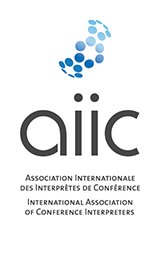
Distance Interpreting
Interpreting beyond the confines of your location
It may not always be practical – or even possible – for interpreters and participants to be present at the same location. Developments in technology have made remote modalities of interpreting more feasible, although there remain real concerns about the impacts of these modalities on quality of service and interpreter health and well-being. To address these concerns, AIIC established a Taskforce on Distance Interpreting (TFDI) and has developed a number of recommendations and guidelines for interpreters and their employers or clients considering teleconference or remote interpreting.
─── Modalities
Modalities
There are a number of different modalities for distance interpreting: those where the interpreter is co-located with most participants (teleconference interpreting) and has either a video-mediated view of the speaker (video conference) or only an audio source (audio conference); and those where the interpreter has an indirect or video-mediated view of the speaker (video remote interpreting) or no view of the speaker (audio remote interpreting).
For conference interpreting purposes, where teamwork is essential and we are also reliant on visual input either completely (in the case of signed language interpreting) or partially (in the case of spoken language interpreting), the relevant modalities are video conference interpreting (where the interpreter is co-located with most participants but has a video-mediated image of a distant participant) or video remote interpreting (where the interpreter is not co-located with any participants but interprets from a video-mediated image of the participant).
Teamwork and quality
Conference interpreting is all about teamwork; being co-located with your booth members and with your team members gives the best results. Interpreters who work together at a remote interpreting hub can usually provide a higher quality of remote interpreting service, as they have access to the requisite ICT/AV and network infrastructure for the task.
Whatever the setup, it is essential that working conditions and technical arrangements meet the requisite ISO standards.
